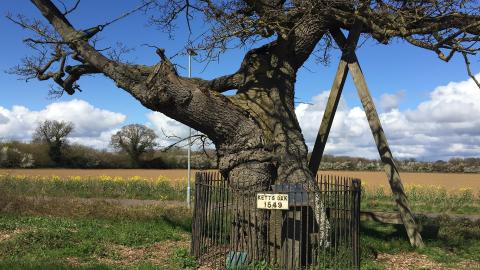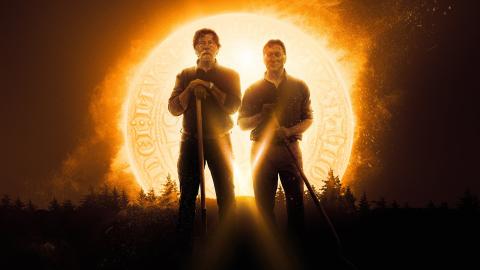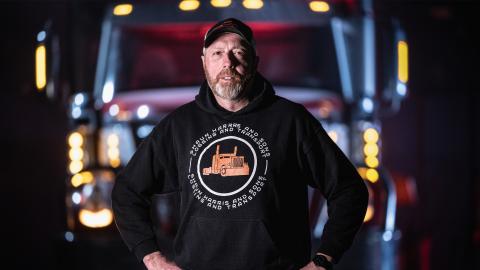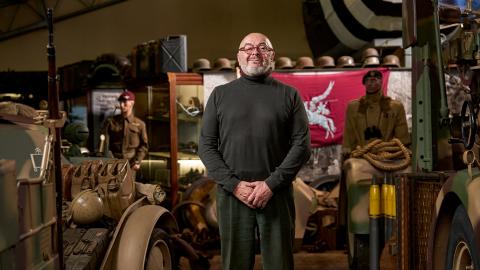The simple shovel used to be the most advanced piece of technology used by treasure hunters. These days there are gadgets and gizmos readily available - the bigger and more complex the hunt, the more sophisticated the technology used. When it comes to large-scale hunts you don’t get much bigger than Oak Island.
Marty and Rick Lagina hope modern technology will help them finally answer the 220-year-old question of what lies beneath Oak Island, so let’s take a look at some of the tech available to them.
Satellite Imaging & Remote Sensing
Sadly not all buried treasure comes with an accompanying map, so on most occasions modern treasure hunters will turn to satellites, planes or drones to provide hi-resolution images of the search area, including details such as terrain and elevation. Satellites or planes equipped with remote sensing technologies can go that one step further and even detect and classify objects. Via the sending and receiving of electromagnetic radiation, remote sensing can even locate subtle variations in soils to find potential dig sites.
Portable Hand Held 3D Scanners
Sometimes clues to the whereabouts of the treasure are left in the form of glyphs, symbols or carved inscriptions. Whereas the old treasure hunter would have sketched these in a diary, the modern seeker can now digitise them in a matter of minutes using portable hand held 3D scanners. In series two, the Lagina brothers used the Creaform GO!SCAN 50 to scan an ancient 8-point star found on a rock. This enabled them to manipulate the image in a colourful three-dimensional world, revealing hidden secrets previously unseen by the human eye.
Metal Detectors
An oldie but a goodie and one piece of tech the Lagina brothers couldn’t have done without. "We've had all kinds of metal-detecting equipment, stuff designed to look deep, shallow, and medium depth," Marty says. This hand held piece of equipment detects metal at various depths under the ground and is the corner stone of many land based treasure hunts. The Mine Lab 30/30 Metal, Detector, designed to find precious metals only, helped the Lagina’s uncover their biggest piece of treasure so far - a 300 year old Spanish coin.
Ground Penetrating Radar
Going beyond just metal, ground penetrating radar can literally see underground. No bigger than an average sized lawn mower, a GPR unit can measure depths from a few inches to thousands of feet. It emits electromagnetic energy into the ground and if that energy encounters an object it will be reflected. Those reflected signals are returned to the receiver and interpreted by the system, building up a picture of what lies beneath.
Sonar
Sonar can help build that picture even further, helping uncover what might lie within an underground chamber and whether it’s worth digging down to. Sonar transmits and receives acoustic energy signals, and when lowered into the target area, is able to provide a high-definition rendering of the landscape. At the end of series two, Rick and Marty lowered an advanced side scan sonar head into the bottom chamber of 10-X borehole. In this 235 feet deep chamber the sonar uncovered what appeared to be a man-made chest along with two additional tunnels and the possible presence of a human body.
Snake Cameras & ROVs (Remotely Operate Vehicles)
Before digging commences, a treasure hunter can confirm exactly what the sonar or GPR picked up by taking a visual look below. There are two great tools available to help them achieve this. First up is the snake camera, a highly manoeuvrable waterproof handheld video endoscope system, equipped with LED lights and magnetic pickup attachment. Requiring a hole no more than a couple centimetres wide, it is the ideal piece of kit for tight underground spaces.
Second up is an ROV, a highly manoeuvrable remote controlled underwater device capable of compiling video footage of tight, unsafe or otherwise unreachable spaces. They are often equipped with a mechanical arm enabling them to retrieve items as well as record them. The Lagina’s make use of state-of-the-art ROVs within borehole 10-X, although one caught on fire proving that technology isn’t always helpful.
Digging & Excavating
When it’s time to start moving the earth, technology has advanced a long way from the simple shovel. Bulldozers make quick work of clearing the land for the drilling rigs to be set up. These rigs can be huge permanent structures or smaller mobile ones, which can be mounted on the back of a truck. Capable of reaching incredible depths, drills can bring back samples of what lies below. If digging is required, modern excavators make light work of shifting the soil - a top-of-the-range model can move a gigantic 5,000 cubic meters of dirt in one 10-hour shift.
These days treasure won’t stay buried for long!















